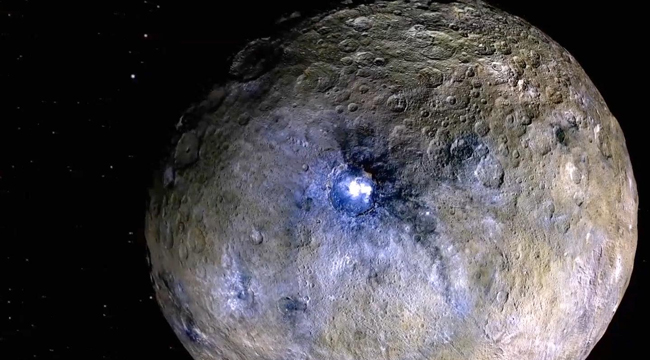Ceres Is An Ocean World, NASA’s Mission Result Says
CERES – NASA Dawn’s major exploration mission on the dwarf planet Ceres shows that the said planet, which is said to be a barren space rock, is an ocean world.

The dwarf planet in the asteroid belt between Mars and Jupiter, according to ABS-CBN News.
It has its own gravity, which enables NASA Dawn spacecraft to capture high-resolution images of its surface.
A team of scientists from the United States and Europe have analyzed images which relayed from the orbiter. The images were captured around 35 kilometers or 22 miles from the asteroid.
They fixated on the Occator crater, which is 20 million years old and determined that there is an “extensive reservoir” of brine beneath the dwarf planet’s surface.
Many studies that was published in journals Nature Astronomy, Nature Geoscience and Nature Communications also showed more stuff to know about the dwarf planet.
The dwarf planet was discovered by Italian polymath Giuseppe Piazzi in 1801.
One team discovered that there is a presence of the compound hydrohalite, which is common in sea ice but, however, had never been observed off of Earth..
Rome’s Istituto Nazionale di Astrofisica’s Maria Cristina De Sanctis said that hydrohalite is proof that the dwarf planet used to have seawater.
“We can now say that Ceres is a sort of ocean world, as are some of Saturn’s and Jupiter’s moons,”
Based on the report, he team added that the salt deposits looked like they had built up within the last two million years.
This also shows that the brine may still be ascending from the space object’s interior.
“The material found on Ceres is extremely important in terms of astrobiology,”
“We know that these minerals are all essential for the emergence of life.”
California Institute of Technology’s Jet Propulsion Laboratory’s Julie Castillo-Rogez said that the discovery of hydrohalite was a “smoking gun” for ongoing water activity.
In another paper, researchers from US showed images of the Occator crater and discovered that its and hills may have formed when water ejected by the impact of a meteor froze on the surface.
The authors said that their findings proved that the water freezing processes may have been active on the dwarf planet before.
What do you think of this report? How will you react to this? Let us know more about it in the comments below.
READ ALSO: Zapote Market Under Lockdown As Vendors Test Positive For COVID-19
Check out our latest news at philnews.ph or in our following social media pages
Facebook: /PhilNews
Twitter: @PhilNews247
Instagram: @philnewsph
